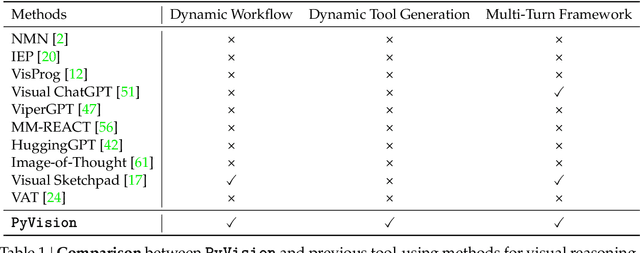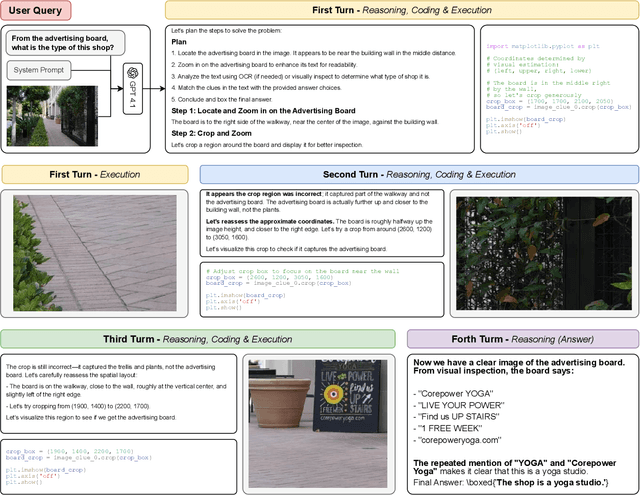Shaoheng Lin
Yume: An Interactive World Generation Model
Jul 23, 2025



Abstract:Yume aims to use images, text, or videos to create an interactive, realistic, and dynamic world, which allows exploration and control using peripheral devices or neural signals. In this report, we present a preview version of \method, which creates a dynamic world from an input image and allows exploration of the world using keyboard actions. To achieve this high-fidelity and interactive video world generation, we introduce a well-designed framework, which consists of four main components, including camera motion quantization, video generation architecture, advanced sampler, and model acceleration. First, we quantize camera motions for stable training and user-friendly interaction using keyboard inputs. Then, we introduce the Masked Video Diffusion Transformer~(MVDT) with a memory module for infinite video generation in an autoregressive manner. After that, training-free Anti-Artifact Mechanism (AAM) and Time Travel Sampling based on Stochastic Differential Equations (TTS-SDE) are introduced to the sampler for better visual quality and more precise control. Moreover, we investigate model acceleration by synergistic optimization of adversarial distillation and caching mechanisms. We use the high-quality world exploration dataset \sekai to train \method, and it achieves remarkable results in diverse scenes and applications. All data, codebase, and model weights are available on https://github.com/stdstu12/YUME. Yume will update monthly to achieve its original goal. Project page: https://stdstu12.github.io/YUME-Project/.
PyVision: Agentic Vision with Dynamic Tooling
Jul 10, 2025



Abstract:LLMs are increasingly deployed as agents, systems capable of planning, reasoning, and dynamically calling external tools. However, in visual reasoning, prior approaches largely remain limited by predefined workflows and static toolsets. In this report, we present PyVision, an interactive, multi-turn framework that enables MLLMs to autonomously generate, execute, and refine Python-based tools tailored to the task at hand, unlocking flexible and interpretable problem-solving. We develop a taxonomy of the tools created by PyVision and analyze their usage across a diverse set of benchmarks. Quantitatively, PyVision achieves consistent performance gains, boosting GPT-4.1 by +7.8% on V* and Claude-4.0-Sonnet by +31.1% on VLMsAreBlind-mini. These results point to a broader shift: dynamic tooling allows models not just to use tools, but to invent them, advancing toward more agentic visual reasoning.
Sekai: A Video Dataset towards World Exploration
Jun 18, 2025Abstract:Video generation techniques have made remarkable progress, promising to be the foundation of interactive world exploration. However, existing video generation datasets are not well-suited for world exploration training as they suffer from some limitations: limited locations, short duration, static scenes, and a lack of annotations about exploration and the world. In this paper, we introduce Sekai (meaning ``world'' in Japanese), a high-quality first-person view worldwide video dataset with rich annotations for world exploration. It consists of over 5,000 hours of walking or drone view (FPV and UVA) videos from over 100 countries and regions across 750 cities. We develop an efficient and effective toolbox to collect, pre-process and annotate videos with location, scene, weather, crowd density, captions, and camera trajectories. Experiments demonstrate the quality of the dataset. And, we use a subset to train an interactive video world exploration model, named YUME (meaning ``dream'' in Japanese). We believe Sekai will benefit the area of video generation and world exploration, and motivate valuable applications.
DynamicScaler: Seamless and Scalable Video Generation for Panoramic Scenes
Dec 15, 2024Abstract:The increasing demand for immersive AR/VR applications and spatial intelligence has heightened the need to generate high-quality scene-level and 360{\deg} panoramic video. However, most video diffusion models are constrained by limited resolution and aspect ratio, which restricts their applicability to scene-level dynamic content synthesis. In this work, we propose the DynamicScaler, addressing these challenges by enabling spatially scalable and panoramic dynamic scene synthesis that preserves coherence across panoramic scenes of arbitrary size. Specifically, we introduce a Offset Shifting Denoiser, facilitating efficient, synchronous, and coherent denoising panoramic dynamic scenes via a diffusion model with fixed resolution through a seamless rotating Window, which ensures seamless boundary transitions and consistency across the entire panoramic space, accommodating varying resolutions and aspect ratios. Additionally, we employ a Global Motion Guidance mechanism to ensure both local detail fidelity and global motion continuity. Extensive experiments demonstrate our method achieves superior content and motion quality in panoramic scene-level video generation, offering a training-free, efficient, and scalable solution for immersive dynamic scene creation with constant VRAM consumption regardless of the output video resolution. Our project page is available at \url{https://dynamic-scaler.pages.dev/}.
 Add to Chrome
Add to Chrome Add to Firefox
Add to Firefox Add to Edge
Add to Edge